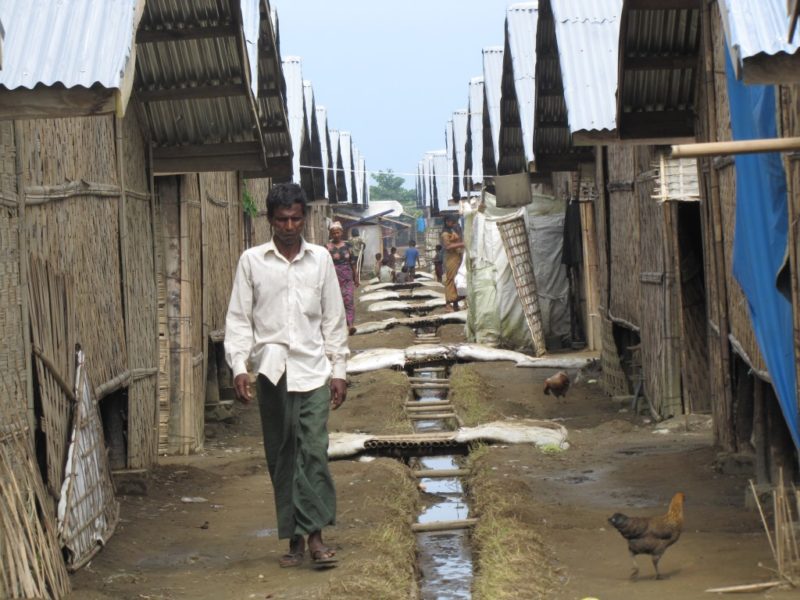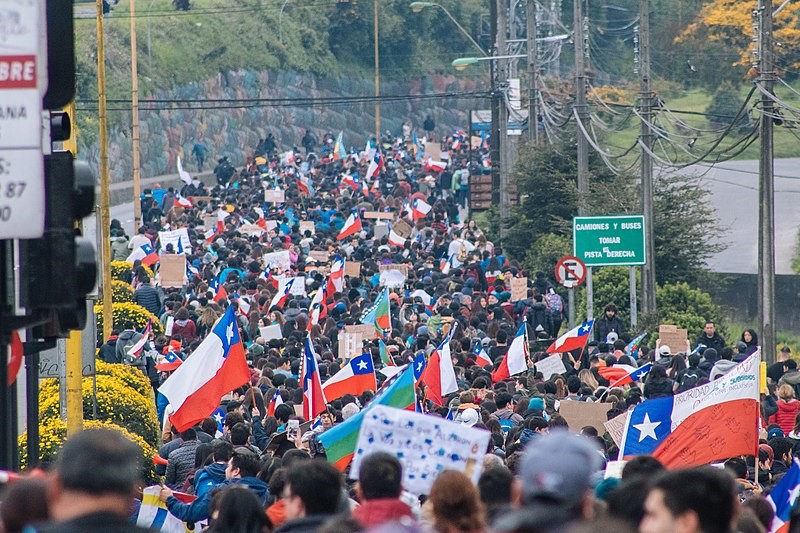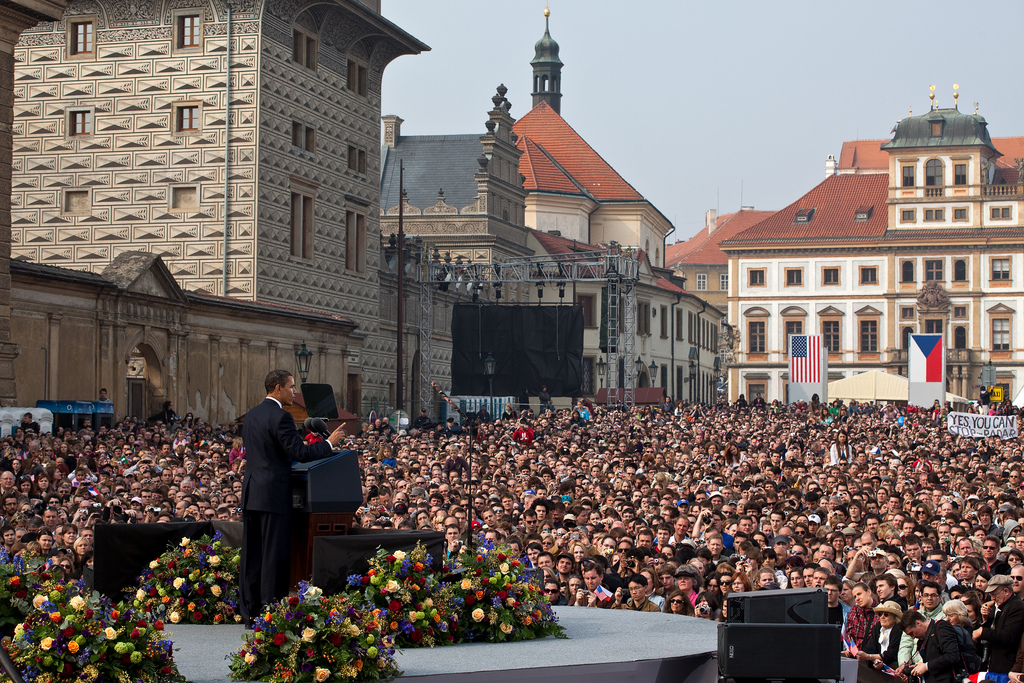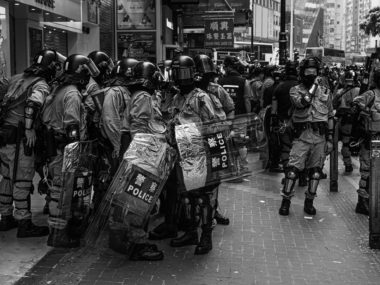Guest post by Shelli Israelsen
On March 31, 2020, Myanmar’s Ministry of Health and Sports confirmed its first COVID-19 death. The death came after weeks of denial from authorities that Myanmar, which shares borders with China, India and Thailand, had any confirmed cases of COVID-19. Recently enacted measures to help stem the spread of the virus are unlikely to be enough to prevent the country of 54 million people from becoming the new epicenter of the outbreak in Asia.
The government’s sluggish response to the pandemic is not the only factor working against containment of the virus. Instead, decades of chronic underspending in the health sector, multiple civil wars, and an extensive network of internally displaced persons (IDP) camps will make COVID-19 a humanitarian disaster for Myanmar.
In 2009, Myanmar had the lowest public health expenditure in the world, spending only 0.2 percent of its gross domestic product on health. After the country’s democratic transition in 2011, public spending on health increased, and by 2015, 4.9 percent of GDP was spent on healthcare. But Myanmar still lagged behind its neighbors—Vietnam and Cambodia, for example, spent 5.7 percent and 6 percent of GDP on health that same year. Myanmar’s unreliable health insurance system also meant that out-of-pocket spending was as high as 90 percent in 2013, before decreasing to 65 percent in 2015—a huge financial burden in a country where most people still live in poverty.
Far more worrisome for the containment of COVID-19 is Myanmar’s grossly inadequate testing capabilities. There is only one laboratory capable of testing for the coronavirus in the country, and although wealthy neighbors like China and Singapore have donated around 10,000 test kits, the Yangon-based National Health Laboratory only has four machines with which to conduct the tests, and only seven microbiologists to perform them.
Myanmar’s healthcare infrastructure will exacerbate the crisis. With only 9 hospital beds per 10,000 population and a nationwide ratio of 6.1 doctors per 10,000 people, even improved testing capabilities are unlikely to prevent the healthcare system from quickly becoming overwhelmed, leading to more deaths. The situation in rural areas, where a majority of the population live, is even worse—unreliable electricity, poor roads, limited transportation to hospitals, and the absence of skilled medical personnel mean that the poorest are the most vulnerable to the deadly disease.
How did things get this bad? Myanmar’s underspending in healthcare and poor medical infrastructure is the result of decades of mismanagement by the military government, which ruled Myanmar from 1962 to 2011. International sanctions following the military’s crackdown on the 1988 student led pro-democracy uprisings crippled the economy further. The sanctions were aimed at Myanmar’s ruling military class and included visa bans and freezing assets, but they had little effect because those officials rarely traveled to the US and Europe and had few assets in those countries. However, the suspension of aid was extremely damaging to social services such as healthcare. For example, the US’s 2003 total trade sanctions contributed to the withdrawal of financing the Global Fund for AIDS, Tuberculosis and Malaria from Myanmar in 2005. Despite the easing of some sanctions in 2012, the suspension of aid left a lasting mark in the country’s ability to combat infectious diseases.
The situation in Myanmar’s ethnic border areas is even more pressing. As the country devolved into several ethnic conflicts following independence, the government and the ethnic armed groups carved out separate spheres of influence, with the government maintaining control primarily in the low-lying delta region and the insurgents along the country’s mountainous border regions. This geographic separatism resulted in the uneven development of state governance and public service provision in Myanmar’s seven ethnic states. Additionally, the military’s adoption of the brutal “Four Cuts” counter-insurgency doctrine in the 1970s, where entire villages were relocated to deny insurgents food, recruit, intelligence and money, meant that the health care sector in these areas is virtually non-existent. For instance, prior to the Rohingya genocide in Rakhine state, UN sources estimated that there was only one doctor per 83,000 persons in two Muslim-majority townships, whereas the Buddhist majority capital of Sittwe had one doctor per 681 persons. Recent developments, such as restriction on access to eight out of the 17 townships in Rakhine state and even older restrictions on humanitarian assistance to those living in IDP camps in Kachin state, means that tens of thousands of Myanmar’s ethnic minorities are at risk of contracting the disease.
Myanmar’s mishandling of the coronavirus, particularly in its ethnic areas, as well as its refusal to allow international aid to IDP camps and its continued attacks on the country’s ethnic minorities, highlight the continued power of the military establishment in steering government policy. Despite winning a landslide victory in 2015, in what many observers viewed as a credible election, Aung San Suu Kyi’s National League for Democracy (NLD) has been unable to rein in the worst impulses of Myanmar’s military establishment. The civilian government’s response to COVID-19 so far is strikingly similar to the military government’s response to the devastating Cyclone Nargis in May 2008. And although Myanmar has increased investments to its public health infrastructure since then, the government’s coronavirus response may help settle the academic debate on whether Myanmar is a hybrid regime or a country transitioning to democracy.
The government of Myanmar still has choices available for containing the spread of the coronavirus. It can take swift decisive action, such as suspending travel from affected areas, instituting quarantines and keeping schools and other public areas closed until widespread testing is available. Lifting restrictions on humanitarian aid in ethnic areas and IDP camps, and granting international governmental organizations and the UN “immediate, unrestricted, and sustained access to displaced civilians” could reduce the toll of the virus. Using Vietnam as a prototype, Myanmar could also reorient its extensive military network to help stem the rate of infection during the pandemic—but this carries risks of making the civilian government appear even weaker and does nothing to ease the fear that the military may refuse to return to the barracks once given a carte blanche to monitor citizens during a pandemic.
Over the long term, Myanmar should continue to increase spending on health and extend the Nationwide Ceasefire Agreement to include more insurgent groups in an effort to improve the infrastructure in ethnic states. Myanmar is a competitive authoritarian regime that will require either a lot of time or drastic change for the veto-wielding military establishment to relinquish its power and for the civilian government to implement much-needed change. Ultimately, this is what is required for a timely and efficient humanitarian response to future disasters.
Shelli Israelsen has a doctoral degree in political science from Indiana University – Bloomington, where she specialized in international relations and research methodology. Her research areas are conflict processes and international security.






